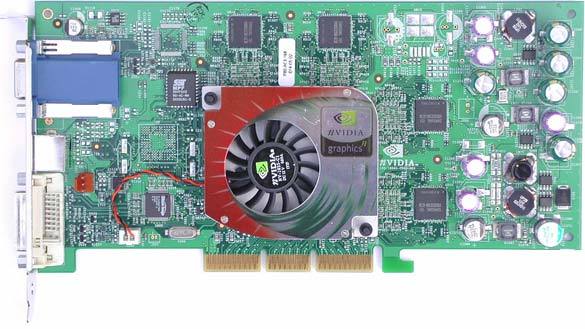Preview of the New OpenGL Chips - Radeon 8800 vs. Quadro4 750XGL
ELSA GLoria4 With Quadro4 750XGL By NVIDIA
Times are tough for the German manufacturer ELSA. How in the world can you regain the trust of your customers when you have declared yourself insolvent? A positive sign came from NVIDIA - it seems that there is an interest in keeping the brand alive. In addition, the team that develops the drivers for OpenGL products is on NVIDIA's payroll. At any rate, there is still hope that the profitable business segments - which includes that of the OpenGL graphics cards - may be revitalized.
The layout of ELSA's GLoria is essentially the same as that of the GeForce4 TI4600 reference design. No wonder - the hardware of the Quadro4 750XGL chip is merely a slightly modified version of this chip. The chip clock has been set for 275 MHz. RAM clock speed is marketed at '550 MHz,' reflecting the double data rate system (DDR); the physical frequency, however, is 275 MHz. Aside from OpenGL drivers for Windows XP, Windows 2000, Windows NT and Windows 98/NE, GLoria 4 comes with additional drivers for applications such as AutoCAD or 3D Studio MAX/VIZ. DirectX and Linux (XFree86) are supported as well. The Quadro4 graphics cards will hit the shelves in mid-April, retailing for $999 (Quadro4 750XGL) and $1830 (Quadro4 900XGL), respectively. The 900 version has the same RAM but the clock speeds for the 3D chip and RAM are higher. The Quadro4 750XGL has standard features identical to its GeForce4 counterpart:
- nfiniteFX II Engine
- Accuview Anti Aliasing
- Light Speed Memory Architecture II (LMA II)
- Crossbar Memory Controller
- Unified Driver Architecture (UDA)
Get Tom's Hardware's best news and in-depth reviews, straight to your inbox.
Current page: ELSA GLoria4 With Quadro4 750XGL By NVIDIA
Prev Page ATI FireGL 8800 Drivers, Continued Next Page ELSA GLoria4 With Quadro4 750XGL By NVIDIA, Continued

